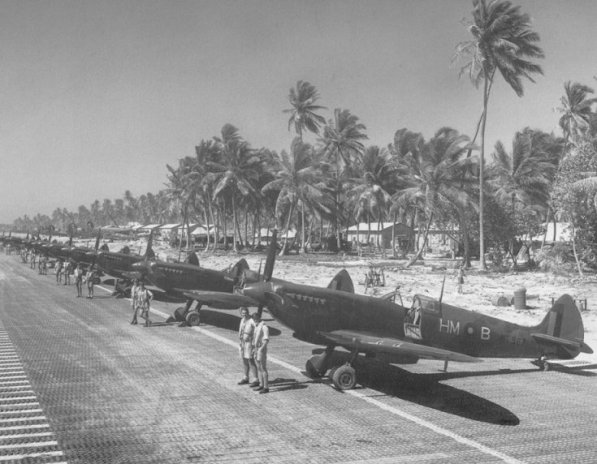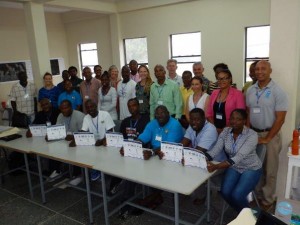When World War 2 started it was difficult for West Indians to join the army unless they were of pure white descent. Despite that, thousands of people in the British colonies in the West Indies gave their full support to the war effort because most were conditioned to revere the mother country.
However, the outbreak of the war created more economic hardships in those countries because trading activities were halted. Despite having to live on less than one pound a day, the colonies raised over six billion (in today’s money) for the war effort.
Land in the colonies was also utilised for military operations. In British Guiana, the American Armed forces built a base and from there, made regular air patrols between British Guiana and Panama. British Guiana also mined bauxite ore from which aluminium was produced to make fighter planes, while Trinidad and Tobago was the only oil producing colony during the Second World War.
Because of such commodities, the Caribbean Sea and Atlantic Ocean came under siege from German submarines (U-boats) who wanted to destroy oil tankers, bauxite carriers and foodstuffs bound for Europe and the USA. So prolific was the German concentration of attacks in the Atlantic Ocean, that in the last four months of 1939, over 114 allied merchant ships were sunk, thus disrupting Britain’s dependency on trade with the colonies.
In October 1939, because they needed more man power, the colonial office relented and announced that anyone born in the colonies could volunteer to fight. Between 1941 and 1942, over 1,300 forestry workers were recruited from British Honduras to work in the local forest industry in Scotland. Supplies of timber from the West Indies were scarce because of the Atlantic blockade and wood was needed to fuel the war industries.
Of the 15,000 men who joined the merchant navy, 5000 perished. During 1944-5 approx, 5,000 West Indians came to Britain as RAF personnel while over 40,000 volunteers went to the USA to work as agricultural labourers. Women also served and about 600 women volunteered for the Auxiliary Territorial Service (ATS) and the Women’s Auxiliary Air Force.
.James Fairweather’s story
James Fairweather worked in admin during the Second World War. He later trained as a gunner. However, the war ended shortly afterwards and those skills were not needed. He was seventeen and a half years old when he volunteered to join the Royal Air Force. Here is an account of his experiences during
I recruited for the war in Jamaica. They were ads in the newspapers. The local press and the chief minister, Mr Manley said that we should join because his son had joined the Royal Canadian Air-Force. The newspaper said that the mother country was at war; all people were talking about was that the mother country was at war with Germany, so we all left college. And because we were part of the British Empire, which included Australia, New Zealand, Burma and India, we volunteered.
India was considered the ‘Jewel in the Crown,’ because Queen Victoria had been its Empress and during WW11, India gave money, valuables, metal and over 2.5 million service men and women to the war effort. They were considered the largest volunteer force in the world.
Some of the older boys [in Jamaica] went into the civil service. The best avenue then was to join the Armed-Forces. I wanted to go to America, but my eldest brother advised me not to go; that I was too young because America could be a hard country. “Join the Air-Force and after the war, if you still feel like going to America, then I will help you because I will be living in America by then,” he said.
So I did what my eldest brother told me to do because he was the eldest in the family. Lots of my former school-mates had joined the Air-Force so I followed suit. It was the ‘in thing’ at the time because Jamaica was part of the British Empire, so were other Caribbean Islands (with the exception of Cuba) such as Trinidad and Tobago, Barbados, British Honduras (Belize). British Guiana (Guyana) was part of the West Indies, politically.
The West Indians that came from the Caribbean to World War 2 were approximately 50,000 including women who joined the Army Territorial Service (ATS). The Caribbean Colonies in the British West Indies contributed financially too.
Trinidad and Tobago had asphalt and oil; Guyana had gold, bauxite and timber and Jamaica exported bananas and citrus fruits. They all contributed money to buy a squadron of air-craft called the ‘West Indies Squadron’.
When other volunteers from the Caribbean came here, they became nurses, secretaries, ambulance drivers and printer operators. The men became munitions workers who went to work in the north of England, as well as foresters who went to work in Scotland in the forestry industry. The foresters were mainly from British Honduras. Some West Indians joined the British Army and they came to Europe as part of the British Armed Forces.



